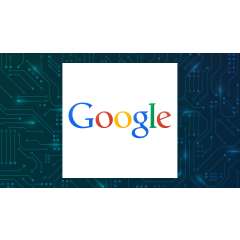David Flower, President and CEO at Volt Active Data, Inc.
In 2020, 91% of the automobiles sold in the United States were connected cars. By 2027, it’s expected that 175 million U.S. drivers will tote themselves around in these intelligent vehicles.
As the global connected car market continues to grow—it brought in $80.87 billion in 2023 and is expected to generate $386.82 billion by 2032, expanding 19.2% each year in between—it’s crystal clear that connected cars will help define the future of mobility and influence the design of smart infrastructure.
Equipped with sensors and communication technologies, these vehicles generate and utilize real-time data to improve road safety, optimize traffic management and help advance the development of smart cities. This data enables connected cars to communicate with other systems—like traffic lights, emergency services, public utilities and other vehicles—which helps ensure more efficient, safer urban environments.
Realizing the full potential of connected cars requires underlying infrastructure capable of transmitting and acting on real-time data as soon as it’s generated. If a connected car sees an incoming vehicle driving the wrong way down the highway but doesn’t notify the driver for three minutes, that person might not have enough time to react, putting their safety and the safety of others at risk.
In this article, I’ll examine connected cars, the integral role real-time data plays in helping realize the promise of the next generation of automobiles, popular connected car use cases and some considerations to keep top of mind as we enter the next era of transportation.
How Connected Cars Communicate With Infrastructure
A connected car is a vehicle built with embedded Internet of Things (IoT) devices that enable it to communicate with digital systems—including other connected cars, cloud services and traffic infrastructure. Through the use of technologies like cameras, sensors, GPS and artificial intelligence (AI), connected cars gather real-time data from both the vehicle itself and its surroundings to better understand things like road conditions, traffic patterns and obstacles.
For connected cars to work, this data needs to be collected, transmitted and analyzed within milliseconds, providing instant insights for in-the-moment decision-making. If a connected car isn’t able to act on data immediately, it more or less defeats the purpose because accidents often happen in the blink of an eye.
By leveraging real-time data right when it’s created, connected cars make roads safer, help automakers ensure optimal performance with predictive maintenance and enable city planners to optimize traffic flow and infrastructure management—all of which enhance mobility while protecting cities, streets and sidewalks.
Four Connected Car Use Cases
From improved road safety and traffic management to optimized smart grids and public safety services, connected cars promise to transform many aspects of daily life. Here are four use cases:
1. Enhanced Road Safety
Connected cars improve road safety by using real-time data to detect potential hazards, like sudden traffic changes or obstructions in the road. This data is shared between other cars and infrastructure—like traffic lights and pedestrian crosswalk systems—creating a network that communicates to prevent accidents.
For example, an automatic braking system can engage immediately if a nearby car suddenly stops. Similarly, adaptive cruise control systems can adjust speed based on traffic flow while alert systems can notify drivers of things like icy roads and accidents ahead, enabling them to react quickly.
2. Smart Infrastructure
By piping real-time data to other systems, connected cars improve traffic management and help streamline traffic flows. Smart traffic lights, for example, can adjust their timing based on real-world traffic conditions, reducing congestion and minimizing emissions.
Additionally, connected cars communicate with smart buildings—like parking facilities and EV charging stations—allowing drivers to easily find available parking spots and charge their vehicles efficiently. This improves driver convenience, reduces delays and contributes to the overall efficiency of traffic systems.
3. Smart Utilities
Connected cars can integrate with energy systems through real-time data shared with utility companies to enhance resource efficiency and sustainability in cities. EVs, for example, can communicate with smart grids to manage charging times based on energy demand, reducing grid strain and optimizing power usage.
As technology advances, vehicle data can be used to predict energy needs in response to traffic patterns, allowing for more efficient energy management and fewer emissions.
4. Emergency Response
By providing real-time data to emergency responders, connected cars can improve the effectiveness of police and ambulance services. With instant updates on road conditions and traffic patterns on hand, emergency responders can take the quickest path to emergencies with data-driven route optimization, reducing response times.
This is a big deal: the faster responders get on the scene, the higher the chances of survival.
Challenges and Considerations
To realize the full potential of connected cars, various stakeholders must overcome several critical challenges. Here are a few to keep in mind:
• Data privacy and security are essential. Ensuring vehicle data is protected from cyber threats is crucial for maintaining trust and safety.
• Stakeholders must overcome interoperability challenges, as seamlessly integrating data from various carmakers and infrastructure providers is complicated.
• Building out smart traffic systems, utilities and data-sharing platforms requires substantial investment.
These challenges can be overcome with enough initiative, carefully designed infrastructure, and real-time data platforms capable of acting on data immediately.
The Future of Connected Cars and Smart Cities
Connected cars promise to transform our daily lives. Not only can these vehicles keep our streets safer while optimizing traffic flows, but they can also help usher in a more sustainable future.
Maximizing the potential of connected cars is only possible with the right infrastructure and supporting technologies in place. By harnessing the speed of today’s mobile networks and the power of real-time processing to analyze and act upon data in milliseconds—with complete precision—we can develop smart city frameworks that pave the way for a more efficient, sustainable and safer future.
Forbes Technology Council is an invitation-only community for world-class CIOs, CTOs and technology executives. Do I qualify?








